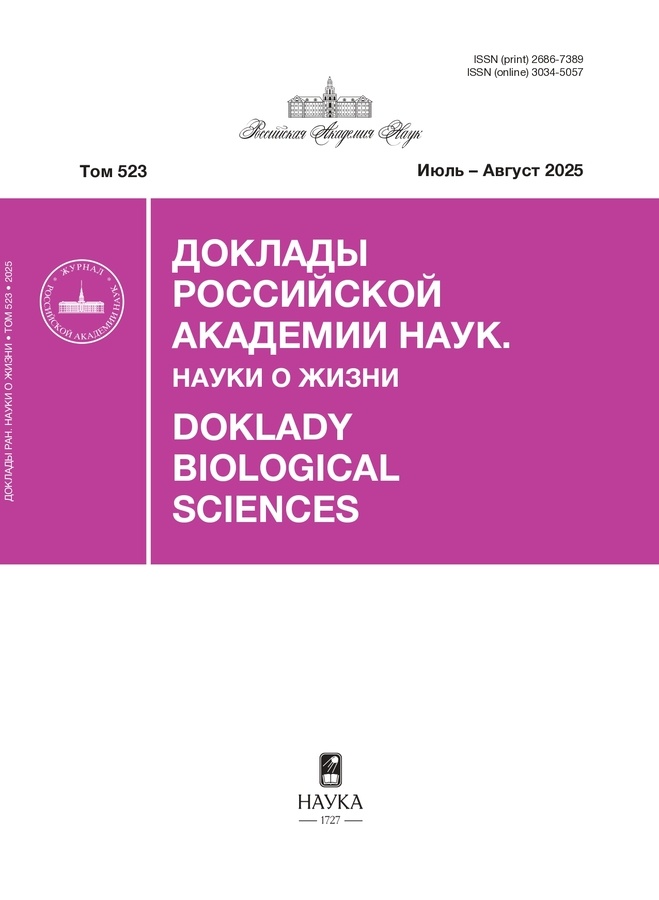First Data on Typhlosole of Ascidian Styela clava: Structure and Function
- 作者: Kobeletskaya M.A.1, Temereva E.N.1
-
隶属关系:
- Lomonosov Moscow State University
- 期: 卷 523, 编号 1 (2025)
- 页面: 417-420
- 栏目: Articles
- URL: https://medjrf.com/2686-7389/article/view/693500
- DOI: https://doi.org/10.31857/S2686738925040066
- ID: 693500
如何引用文章
详细
The ascidian Styela clava is an invasive species that easily colonizes new water areas and has wide distribution. We discovered a previously undescribed typhlosole, which was studied using histological techniques, transmission electron microscopy and computer microtomography. The typhlosole is a large fold of the dorsal intestinal wall, starting in the lower quarter of the stomach and continuing to the rectum. Its shape varies greatly: from a rounded protrusion to a spirally twisted fold. The typhlosole is formed by the intestinal epithelium, a thick layer of connective tissue in which the pyloric tubules and blood vessels pass. The epithelium is formed by glandular, ciliated, and non-ciliated cells demonstrating apocrine secretion. The typhlosole intensifies cavitary digestion and absorption of nutrients. The discovered features may contribute to high digestion efficiency even in low-productive waters, determining the biological success of this species.
作者简介
M. Kobeletskaya
Lomonosov Moscow State University
编辑信件的主要联系方式.
Email: temereva@mail.ru
Moscow, Russian Federation
E. Temereva
Lomonosov Moscow State University
Email: temereva@mail.ru
Moscow, Russian Federation
参考
- Delsuc F., Brinkmann H., Chourrout D., et al. Tunicates and not cephalochordates are the closest living relatives of vertebrates // Nature. 2006. Vol. 439. No. 7079. P. 965–968.
- Tsagkogeorga G., Turon X., Galtier N., et al. Accelerated Evolutionary Rate of Housekeeping Genes in Tunicates // Journal of Molecular Evolution. 2010. Vol. 71. No. 2. P. 153–167.
- Cai Q., Zhang X., Li Z. MiRNAs as promising phylogenetic markers for inferring deep metazoan phylogeny and in support of Olfactores hypothesis // 2010 IEEE International Conference on Bioinformatics and Biomedicine (BIBM) 10.1109/BIBM.2010.5706545. 2010. P. 101–104.
- Jiang A.-l., Yu Z., Cai W.-g., et al. Feeding selectivity of the marine ascidian Styela clava // Aquaculture Research. 2008. Vol. 39. No. 11. P. 1190–1197.
- Monniot F., Monniot C. Ascidians from the tropical western Pacific // Publications Scientifique du Museum, Paris, 2001.
- Nishikawa T., Tokioka T. Contributions to the japanese ascidian fauna XXIX. Notes on some clavelinids from the japanese waters // Publications of the Seto Marine Biological Laboratory. 1976. Vol. 23. No. 1–2. P. 63–82.
- Petersen J. K. Ascidian suspension feeding // Journal of Experimental Marine Biology and Ecology. 2007. Vol. 342. No. 1. P. 127–137. doi: 10.1016/j.jembe.2006.10.023
- Alvanou M.V., Feidantsis K., Papadopoulos D. K., et al. Major ascidian species with negative impacts on bivalve aquaculture: Current knowledge and future research aims // Open Geosciences. 2024. Vol. 16. No. 1.
- Herdman W. A. Liverpool Marine Biology Committee's Memoirs I. Ascidia // Nature. 1899. Vol. 61. No. 1571. P. 126–126.
- Millar R. H. Ciona. University Press of Liverpool, 1953.
- Csuzdi C., Zicsi A. Earthworms of Hungary (Annelida: Oligochaeta, Lumbricidae), 2003.
- Burighel P. and Cloney R. A. Microscopic anatomy of Invertebrates, 1997. P. 221–347.
- Morton J. E. The functions of the gut in ciliary feeders // Biological reviews. 1960. Vol. 35. No. 1. P. 92–139.
- Ermak T.H. A comparison of cell proliferation patterns in the digestive tract of ascidians // Journal of Experimental Zoology. 1981. Vol. 217. No. 3. P. 325–339.
补充文件









